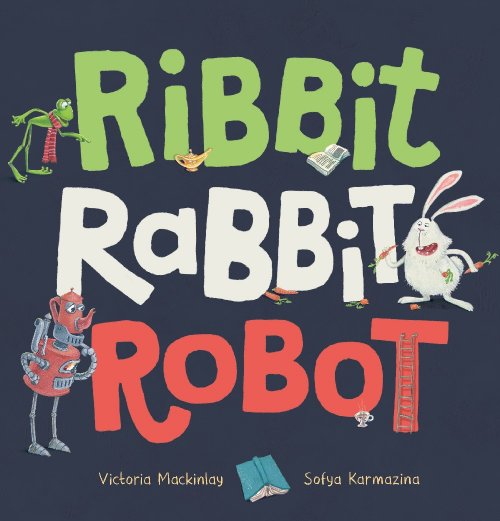
Ribbit Rabbit Robot
- speech sounds - /r/ initial
- speech sounds - /b/ medial
- intonation
- making inferences
- possessive nouns
Review
A frog finds an enchanted lamp in an antique shop, but a cheeky rabbit and a dopey robot selfishly snatch it away. Rabbit and Robot ensue into a frenzy of wish fulfilment without much consideration for the lamp's small print. That is, until Frog fishes it back to safety and selflessly acts on the rhyming riddle within the lamp.
Ribbit Rabbit Robot is a highly engaging story brought to life through its beautifully detailed illustrations. The author cleverly plays with language by only using words following a r-b-t pattern throughout the story. This means the story consists mainly of one-word phrases that are packed with alliteration. I love this book for working on children's speech, especially /r/ at the beginning of words and /b/ in the middle of words. Due to the limited amount of text, it relies on the reader using intonation to instil meaning into words (e.g. "Rub it," said Rabbit. "Rub it?" said Robot. "Rubbit," said Frog.). This makes it ideal for children who need to work on the prosody of their speech (e.g. children with Childhood Apraxia of Speech).
There are many language goals to target using Ribbit Rabbit Rabot too! The minimal use of text encourages the reader to refer to the illustrations in order to make inferences and predictions about the story. It also has some fantastic sections modelling the use of possessive nouns (e.g. "Robot's!" said Robot. "Rabbit's!" said Rabbit.). For further speech and language goals to target using Ribbit Rabbit Robot, see the list below.
Book Details
Story Plot: Finding Tale
- alliteration
- animals
- friendship
- greed
- kindness
- magic
- selfishness
Speech and Language Targets
- /b/ - ribbit, rabbit, robot, reboot, rub, grab, read
- /dj/ - genie
- /r/ - ribbit, rabbit, robot, rub, rob, row, ride, rev, reboot, ruin, wreck, read
- /r/ blends - frog
- /t/ - it, ribbit, rabbit, robot
- possessive nouns (Rabbit's, Robot's)
- objective pronouns (it)
- action verbs (e.g. rub, grab, rob, row, ride, rev)
- matching
- labelling
- describing functions of objects
- describing (what the characters look like)
- differences
- similarities
- compare/contrast
- predicting (e.g. what might come out of the lamp? What might the characters wish for? Where might the rabbits be going? etc.)
- explaining means to a goal (e.g. how can Robot and Frog get the lamp from the rabbits who are in the hot air balloon?)
- identifying obstacles to an action (e.g. why is Robot the slowest one on the bicycles? why couldn't Robot and Frog catch the rabbits?)
- making inferences (e.g. why is Frog in a big cloud of dust?)
- environmental print (letter, television, sign, book)
- typesetting changes
- friendship
- good behaviour
- problem solving
- dialogue
- direct character speech
- copying sounds
- rhyme
Book Info
Published by Scholastic Australia in 2020 (ISBN: 9781743834060)

